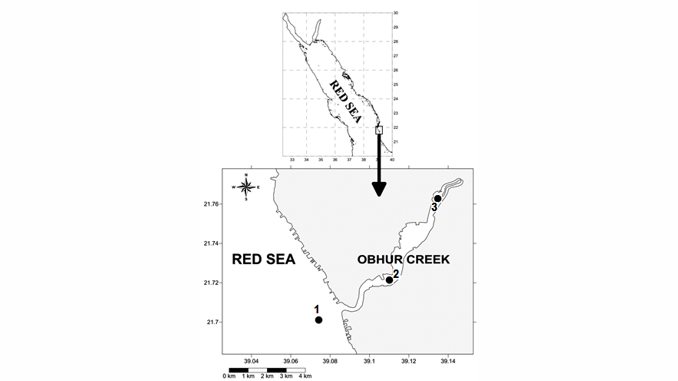Issue 1/2021 (March 2021)

Variation in radical antioxidant capacity and the total amount of carotenoids in razor clams, Ensis marginatus (Pennant, 1777), from the Çanakkale Strait (Abidealtı), Turkey
Metabolic activities such as breathing and digestion, resulting from natural functions of the body through oxidation, lead to the formation of free radicals that cause cancer, premature cardiac aging and some chronic diseases. Antioxidants are

Spatio-temporal variation of microphytoplankton communities in Obhur Creek, the central Red Sea
The abundance and distribution of microphyto-plankton and related physicochemical factors were assessed monthly in Obhur Creek, the central Red Sea. Sampling was carried out near the entrance, the middle and end parts of the creek.

Soft-bottom crustacean fauna from the Turkish coast of the Black and Marmara seas with new records
It is becoming increasingly important to monitor zoobenthic biodiversity in seas that are under industrial and anthropogenic pollution pressure, such as the Black Sea and the Marmara Sea. This study covers crustacean species in the

Reproductive biology of the rayed pearl oyster (Pinctada imbricata radiata, Leach 1814) in Izmir Bay
The present study was carried out to determine gonadal stages and quality of pearl oyster meat (Pinctada imbricata radiata, Leach, 1814) in Izmir Bay (Turkey). Pearl oyster samples were collected from the study area at

Reproductive biology of Penaeus kerathurus (Forskål, 1775) (Decapoda: Penaeidae) in the Sea of Marmara, Turkey
One of the economically important species is Penaeus kerathurus (Forskål, 1755), which is widespread in the Mediterranean ecosystem. This paper presents results of research on reproductive biology of Penaeus kerathurus in the Sea of Marmara.

Phylogenetic characteristics of selected European huchen (Hucho hucho L.) broodstocks – implication for broodstock management
European huchen (Hucho hucho) is a representative of large and rare migratory salmonid fish, which has become endangered due to extensive anthropogenic changes in freshwater ecosystems. Numerous broodstocks of the European huchen have therefore been
